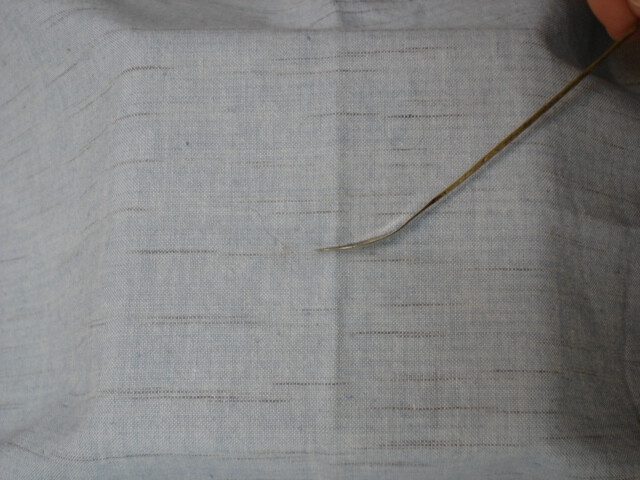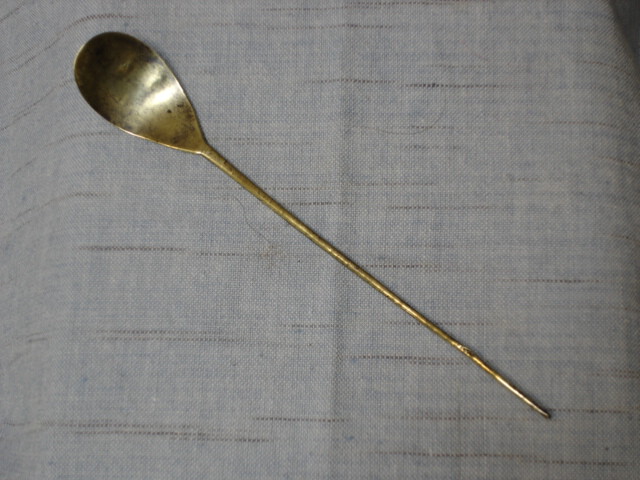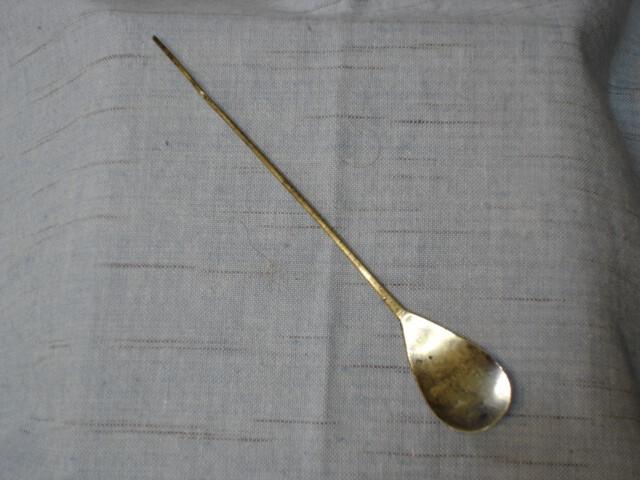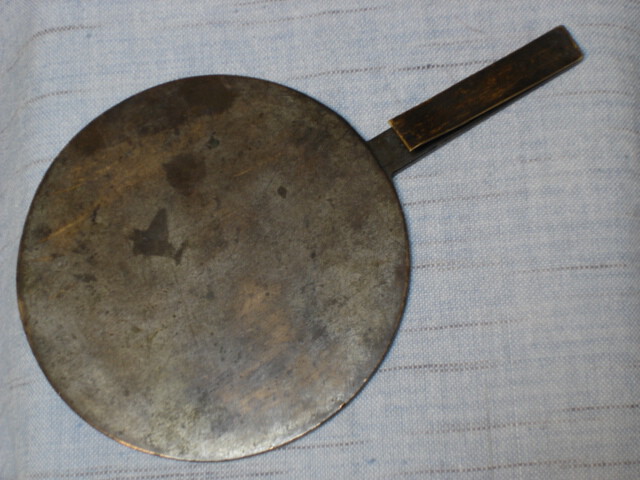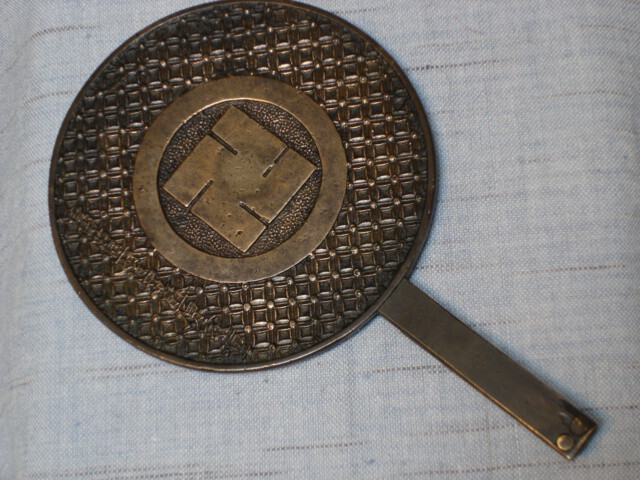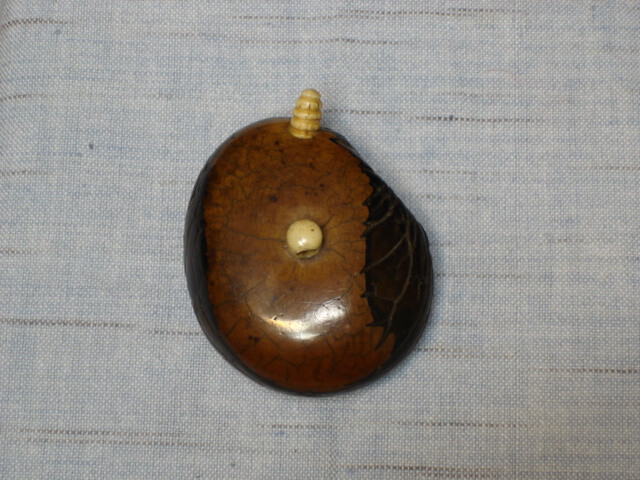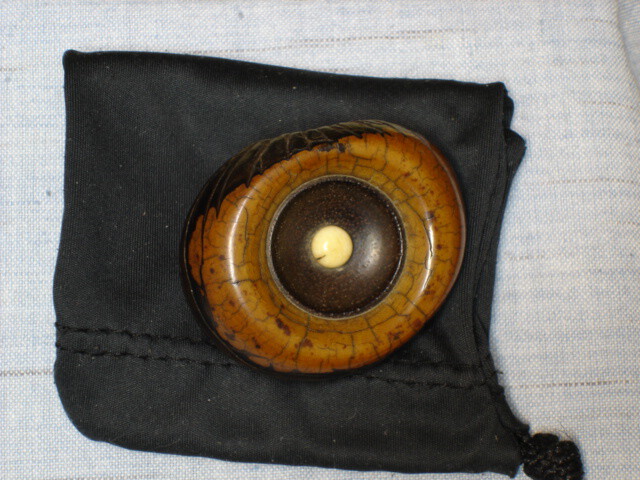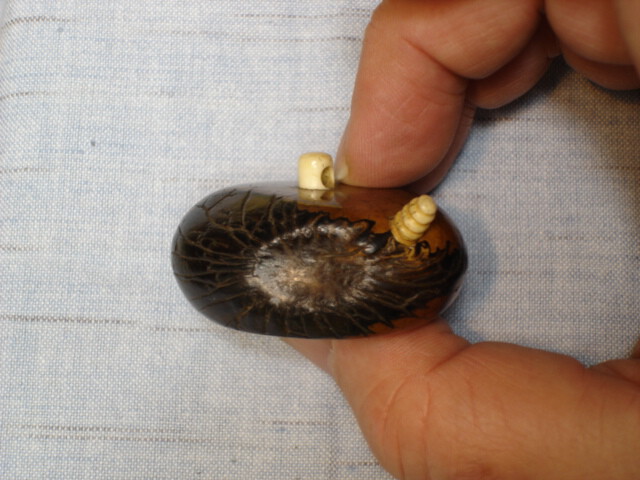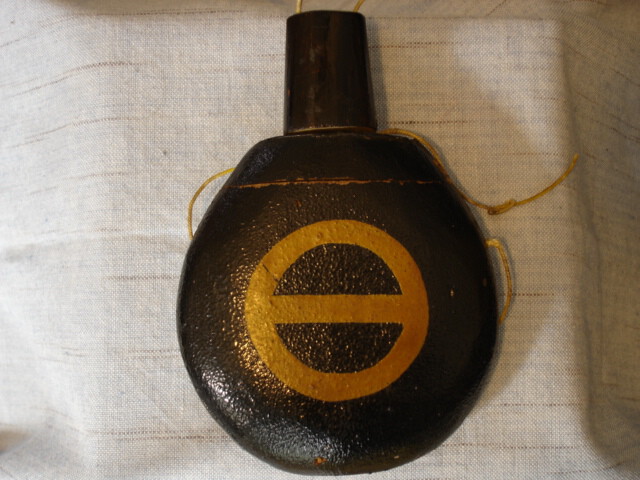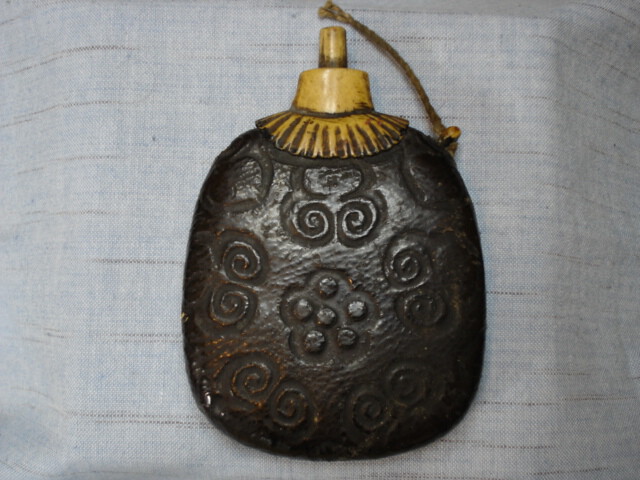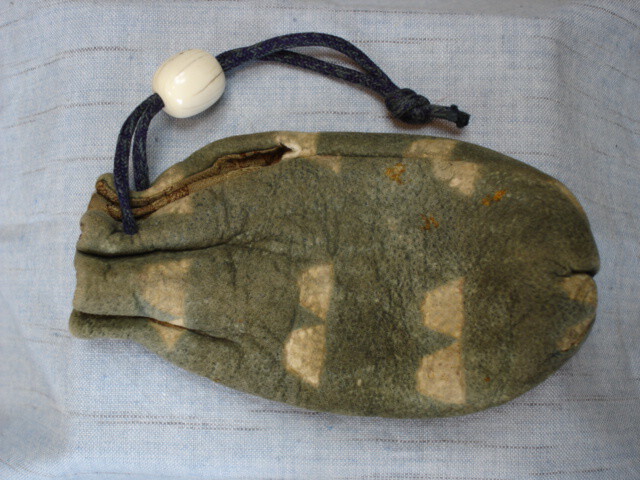-
Posts
13,168 -
Joined
-
Last visited
-
Days Won
228
Content Type
Profiles
Forums
Events
Store
Downloads
Gallery
Everything posted by Bugyotsuji
-
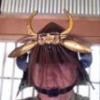
This Week's Edo Period Corner
Bugyotsuji replied to Bugyotsuji's topic in General Nihonto Related Discussion
Yes, you are right. What I meant was that within Japan the lacquerware that would have been for everyday use, including much of the better stuff, is not worth a lot. The very best work will be in the hands of collectors or off abroad, attracted by the kinds of mind-boggling prices you mention, Eric. Your own collection is lovely. That iron kama pot must be for the tea ceremony, and with the original box, worth quite a bit, I should imagine. You should get the right kind of binding to pass through that hole at the bottom of the box, if you haven't already got one. I don't have anything like that, just folksy bits that I come across occasionally. I will typically sort through several thousand bits and pieces at two or three antiques fairs before I spot something that catches my eye and fits my budget. Here is one, representing the opposite end of the market from your pieces. I know what it is to some extent, but would be grateful if anyone can add to my understanding. It was black with filth and I spent several hours getting it to this state, rubbing off hundreds of years of history!!! -
Some pretty amazing patterns there. The Hachisuka Daimyos who moved to Awa (Tokushima?) on the east coast of Shikoku used a Manji symbol. Recently I came into the possession of a Mae-date which was originally made as a small shinchu mirror in about 1290. The Mei is good. It has a bold Manji in the centre of it. At some point one of the Hachisukas must have attached a spring plate to the tang so that it slots nicely into the fixture on the front of the helmet. OK, since I wrote that I've taken some piccies, even though it's neither fuchi nor kashira. Forgive the...
-
Often a nenki finshes with å‰æ—¥, kichi-jitsu, which means one of the lucky or fortunate days which recur in the the calendar month. If you pull a 'Dai-kichi' å¤§å‰ fortune stick at a shrine, you will be in for a lot of luck.
-
Probably an unrecorded smith. Gimei are usually done in an attempt to be someone everyone knows and will pay good money for. (Just my personal opinion)
-
Yup, the only one...
-

This Week's Edo Period Corner
Bugyotsuji replied to Bugyotsuji's topic in General Nihonto Related Discussion
Wow! You'd never guess that was bamboo... A chocolate log with ivy! :lol: It's such a pity that lacquerwork is not valued much in Japan today. Such an amazing art, and yet you can pick up ridiculous bargains. I have rescued big beautiful boxes and paid almost nothing, often only two or three thousand yen. Do you take care with humidity? The Japanese have a long history of imitating wood, don't they. You get wood Mokume grain in sword blade steel, for example. Right at the other end of the scale are handrails and barriers on hiking trails, all made of concrete, but painted and swirled to look like wood! -
Have to agree. Really, really nice. The last one has a Mon in it too.
-

This Week's Edo Period Corner
Bugyotsuji replied to Bugyotsuji's topic in General Nihonto Related Discussion
Milt wrote: "hope I don't need someone to step in to explain the joke." That makes it difficult for anyone to say anything! Brian, it's a kagamibuta Netsuke. Franco posted a Netsuke, so I decided to post the chestnut one as a follow-up. It looks like wood, but probably Corizo or Tagua nut, stained to provide a contrast with the ivory 'maggot' (Milt, 'worm'). The worm can be wriggled and jiggled and to some extent retracts. The 'kagami plate looks like iron, with chisel taps in it. Mumei. Netsuke were as you know used as a sort of toggle to hang all kinds of sagemono from the obi. They tended also to be an eye-catching fashion statement, much as we might carry the latest phone or wear an unusual watch today. I think Milt's brain is occupied with the sexual connotations of the pudendic chestnut being invaded by the naughty worm. -
The first three kanji are æ–¼æ±éƒ½ (Oite Tôto). They mean “at Tokyoâ€. :lol: (Maybe one day I'll get something right! Reminder to self to keep mouth closed and fingers off the keypad.)
-
Good thought. If you can get real bamboo chopsticks, even better. And if you can get smoked bamboo, you're laughing.
-
Is it possible that Tadamitsu of Hizen was in "Ryo(jun), Higashi To", Manchuria, when he made this? æ—…(é †)æ±éƒ½
-
Thank you, Koichi san.
-
I am just guessing until someone steps in to say otherwise: 備州(??)æ–°å本行作之 Bishu (? ? ) Niigo Motoyuki Saku kore 慶応三年二月日 Keio San nen Ni gatsu jitsu ***In the brackets is a place name. It looks somewhat like ç”°å› , but how would you read that if such a place ever existed? Detsune? Tanami? Den-in? Or is it one character...? This would take me some time to track down using old maps!
-
Yes, there was one on here the other day described as a surrender tag, but it was printed in Japanese and looked to me more like a tag for boarding a ship.
-
Tadao Nakajima, Fuel Section, Military Supplies Production Dept. Now I bet that was boring compared to your Chinese night out!
-

This Week's Edo Period Corner
Bugyotsuji replied to Bugyotsuji's topic in General Nihonto Related Discussion
-
è»éœ€ç”Ÿç”£éƒ¨ç‡ƒæ–™èª² ä¸å³¶å¿ ç”· Gunju Seisan-bu, Nenryo-ka, Nakajima Tadao Can you take it from there, Brian?
-

This Week's Edo Period Corner
Bugyotsuji replied to Bugyotsuji's topic in General Nihonto Related Discussion
Now there's a man with sense! -
Eric, that's a kind thought. Thank you. You are very close! It's actually on the 18th of Feb, six hours from now here in Japan.
-

This Week's Edo Period Corner
Bugyotsuji replied to Bugyotsuji's topic in General Nihonto Related Discussion
Ian, When you say the lacquer one, which one do you mean? They both have lacquer on them. Your tanto had a similar brass kozuka in the saya? It does indeed look like a one-piece kozuka to me, but I wonder why it is made of brass? A form of tsunagi? Franco, What kind of 'tray' is that? The scene is not one I have seen before, but I really like it. The Netsuke looks Meiji/Taisho, but it's difficult to tell from those pics. Do you collect Netsuke? Milt, That Harunobu print? is lovely. The facial expressions are stunning. I hope you are not selling it... -
Not sure if replies are allowed to Brian's excellent translation posting guidelines. If not, please ignore and or erase, as necessary. As one who attempts the occasional translation, could I request that in addition to the short written background to the request, if possible you take two ot three clear shots not only of the specific part to be translated, but also of the overall view. If paperwork, that should be sufficient. If a Mei, a shot of the Mei, another of the nakago itself, and maybe a couple of the blade including the kissaki would make the translation easier. Anyone who has done any translation will know that without the context it is very hard to get comfortable. Most people do the above naturally; just occasionally someone posts the bare minimum photo and this can raise frustrating questions about the whole point of the exercise.
-
You won't be able to read Mei like that if you study 'decent' Kanji! :lol:
-
This looked like an interesting meaty thread so I got ready to go back and read the whole thing. It was disappointing to discover a series of links to eBay with no comment in many cases. At least we can click on the links, I thought, but no, most of them are no longer available... I've missed the boat. If a late comer might be allowed to make a suggestion? When the links to the eBay auction are worth keeping, can we not save the pics and post them for more 'permanent' reference. Pretty please with sugar on. :D
-

This Week's Edo Period Corner
Bugyotsuji replied to Bugyotsuji's topic in General Nihonto Related Discussion
Well, another week; we had some interesting posts last week which took us to the crossover period when Western artists were finding inspiration in the newly-discovered artistic traditions of Edo Japan. (There was a huge influence in the opposite direction on Japanese artists.) Last week I bumped into a French dealer from Germany named Jean Jacques, buying swords and Tosogu for an exhibition in Brussels in May. It's very rare that I will ever meet a Westerner in these parts. Today I was introduced to Thomas, a dealer from Belgium who goes to Tokyo once a year, but was persuaded to try the depths of the countryside. He found a mine of WWII stuff today, he was telling me. Just to keep this thread ticking over, I am posting some recent finds: a kinchaku purse, and two priming powder flasks. These smaller primers tend to be more valuable to collectors than the larger gunpowder flasks proper. They rarely come up, and I grab them when I can. We use them for displays but it's hard to equip new members. Both of these can probably be repaired to live another day. Do I keep them for my collection, or donate/sell them for service as matchlock company equipment? -
Well, it's Latin and people quote it to each other in the West, but there is nothing exactly the same in Japan. The translation sounds a bit like a translation and may need further explanation. In my dictionary the first thing they give is 買手å±é™ºè² 担 Kaite Kiken Futan (Buyer takes responsibility for any danger) You could say 授æ¥æ–™ã€€Jugyo-ryo, which has been quoted at me on many an occasion!!! :lol: It means, "Write it off as tuition fees." The difference to me is the Western phrase is kind of thrown at you and gives no solace. The Japanese phrase is humorous, and having a little true philosophy in it, easier to accept.


